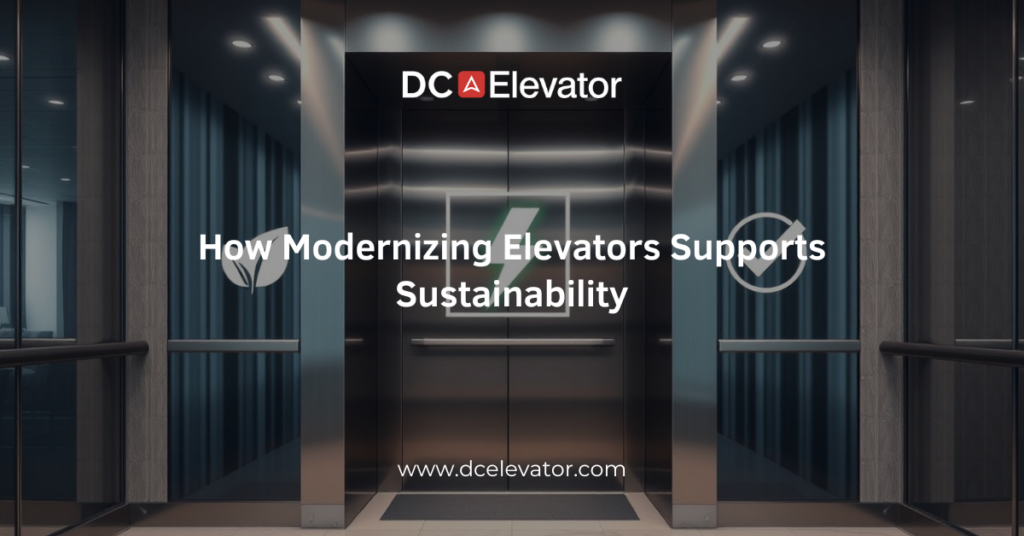As buildings age, elevator systems often become less efficient, not just in performance but also in energy consumption. With sustainability now a top priority for many property owners, facility managers are asking an important question: Can upgrading an elevator system actually make a building more eco-friendly? The answer is yes—and elevator modernization plays a key role.
Energy-efficient upgrades can reduce electricity usage, decrease your carbon footprint, and support compliance with evolving building codes and green certifications. Whether you’re managing a commercial high-rise or a mid-sized residential property, understanding the link between modernization and sustainability can help you make smarter long-term decisions. This blog explores how elevator modernization contributes to environmental responsibility—and what to consider before beginning the process.
The Environmental Cost of Aging Elevators
Older elevators were not built with sustainability in mind. As a result, they often:
-
Consume more electricity due to outdated motors and inefficient control systems
-
Require frequent maintenance and parts replacements, creating waste
-
Generate more heat, putting added strain on HVAC systems
-
Use non-recyclable components and environmentally harmful lubricants
This inefficiency not only increases operational costs but also contributes to higher greenhouse gas emissions. For buildings aiming for energy certifications such as LEED or ENERGY STAR, these older systems can become obstacles.
How Modernization Reduces Energy Use
Modernization doesn’t always mean a full replacement. Strategic component upgrades can significantly improve energy efficiency. Here’s how:
-
Regenerative Drives: (Note: while not mentioned per policy, we suggest general language like “energy-returning systems”) Certain elevator technologies now capture energy produced during braking and redirect it back to the building’s electrical grid.
-
LED Lighting & Auto-Dimming Controls: LED fixtures in elevator cabs use less energy and last longer than traditional lighting. Auto-dimming can further reduce consumption when the elevator is idle.
-
Efficient Motors & Control Systems: Replacing older motors with gearless or high-efficiency models lowers energy use and reduces the building’s carbon footprint.
-
Standby Modes: Newer systems automatically power down during periods of inactivity, cutting down on unnecessary energy consumption.
Contributing to Sustainability Certifications
If your facility is working toward sustainability benchmarks like LEED, elevator modernization can help contribute points in areas such as:
-
Energy & Atmosphere (EA)
-
Indoor Environmental Quality (IEQ)
-
Materials & Resources (MR)
Additionally, building codes are increasingly aligning with energy-efficiency goals. Proactively modernizing your elevators helps ensure ongoing compliance and avoids costly penalties or urgent upgrades later.
Cost-Effective Sustainability Solutions
You don’t need to overhaul your entire elevator system to make a difference. A targeted modernization plan may include:
-
Control system upgrades
-
Cab lighting replacements
-
Door operator modernization
-
Updating to a more efficient motor
These changes offer a lower upfront cost than a full replacement while delivering measurable sustainability gains. Our team works closely with building managers to identify opportunities that align with both operational goals and environmental impact.
Conclusion
Elevator modernization offers more than improved ride quality and reliability—it’s a powerful step toward a more sustainable building. From lowering energy costs to supporting green certification goals, even small upgrades can deliver lasting benefits.
If you’re managing an older elevator system and looking to reduce your building’s environmental footprint, modernization might be the right solution. Our experts can evaluate your existing equipment and recommend sustainability-focused upgrades tailored to your needs.
If your building is aiming to boost energy efficiency and reduce emissions, an elevator modernization analysis is a great place to start.
Contact us today to schedule an evaluation and explore your modernization options.
